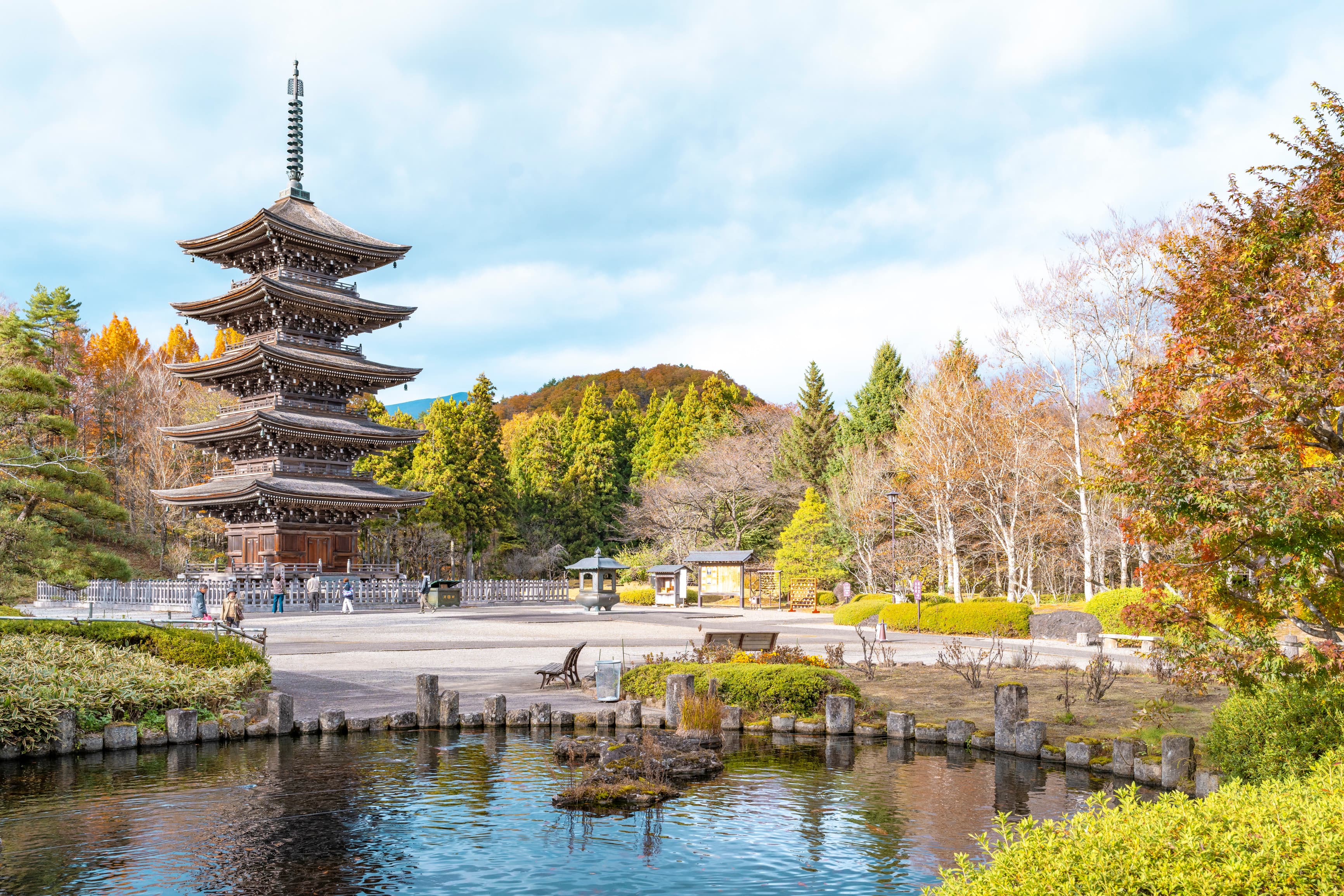
Jogi Nyorai Saihoji Temple
定義如来西方寺- Kumagane StationSenzan Line
- 17 minutes bus drive to Jogi
- Walk 5 minutes
Jogi Nyorai Saihōji, lovingly known as Jogi‑san, is a historic Jōdo‑shū (Pure Land) Buddhist temple nestled in the tranquil, forested foothills of Aoba‑ku, Sendai.
At the heart of Jogi‑san lies its most sacred object: a painted scroll of Amida Buddha, known as Jogi Nyorai. The name combines Jogi, the location, and Nyorai, a term for Buddha. The scroll is hidden behind the main doors of the temple’s Main Hall and is only unveiled five times a year, making each public display a rare and revered occasion.
Historical Origins
The story of Jogi Nyorai Saihōji begins not in Japan, but in Tang-dynasty China, where a priest named Hosso‑Zenji received a sacred image of Amida Buddha from the Monju Bodhisattva at Mount Godai’s Chikurinji Temple. Enshrining it, he spread devotion to Amida throughout the region.
In 1150, this scroll made its way to Japan. Taira no Shigemori, a prominent statesman, donated gold to China’s Kinzanji Temple to pray for peace in Japan. In return, the temple gifted him the sacred Amida scroll. As his health declined, Shigemori entrusted the scroll to his loyal retainer Taira no Sadayoshi, charging him with the task of continuing the prayers for peace, for the imperial family, and for their own Taira clan.
After the Taira clan’s fall at the Battle of Dannoura in 1185, Sadayoshi fled to the remote hills of Jōgi, where he lived in seclusion and prayer. He adopted the name Jogi and safeguarded the scroll for the rest of his life. When he died in 1198, his followers built a small mausoleum over his grave, enshrining the scroll within.
In 1706, the site was formally established as a temple by Genbei Hayasaka, a local leader who became a monk under the name Kanrensha Ryonen. He founded the temple as Gokurakuzan Saihō‑ji, giving rise to the enduring religious institution that still flourishes today.
Architecture and Temple Grounds
Jogi‑san is as much admired for its architectural beauty as for its history. The key highlights include:
- Main Hall (Daihondō) – Completed in 1999, this structure was built entirely using traditional joinery techniques, without a single nail or bolt. It hosts daily chanting services and houses the sacred scroll.
- Five‑Story Pagoda (Goju‑no‑Tō) – Standing at around 30 meters, this elegant pagoda was erected in 1986 as the first of its kind in Miyagi Prefecture. It symbolises peace and the legacy of Sadayoshi.
- Sanmon Gate (1931) and Bell Tower (1930) – Both are registered Tangible Cultural Properties. The gate features artistic carvings and inscriptions by historical figures of national stature.
- Sadayoshi Mausoleum (1927) – Built over Sadayoshi’s grave, this hall is designated as an Important Cultural Property, preserving the spirit of the temple’s original guardian.
Emperor’s Hill and the Sacred Zelkova
A short walk from the main hall leads to Emperor’s Hill, a sacred site deeply tied to Japan’s imperial history. In 1185, Emperor Antoku, only 7 years old, perished during the fall of the Taira clan. Sadayoshi brought the emperor’s belongings to Jōgi and buried them here.
To mark the site, two Zelkova trees were planted. In time, the trees grew together, intertwining into a single trunk - a rare natural phenomenon. This tree, known as Renri no Keyaki (“The Zelkova Trees That Became One”), is venerated as a symbol of unity. Couples and families visit it to pray for marriage, fertility, and long-lasting harmony.
A Cup of Matcha in Peaceful Surroundings
After exploring the temple grounds, visitors can relax with a traditional cup of tea at Yasuragi, a peaceful teahouse on-site.
Here, you can enjoy Japanese matcha served with higashi, a type of delicate dry confectionery. The tea is prepared using natural mineral spring water from the surrounding mountains, known as chōmeisui or “long life water”. This pure water enhances the flavour of the matcha and is believed to bring healing and longevity.
For those who prefer a sweeter treat, hot milk matcha with a soft marshmallow is also available - offering a modern twist on tradition.
The teahouse overlooks the Five-Story Pagoda, and each season paints a different scene: cherry blossoms in spring, lush greens in summer, crimson leaves in autumn, and snowy stillness in winter. Whether seeking quiet reflection or a moment of rest, this is an ideal place to pause and savor the present.
At Hey Japan!, we strive to keep the places listed on our website as current as possible. However, it is important to note that location owners or management may make changes to their plans, including canceling events, altering opening times, or modifying admission requirements, without prior notice. To ensure that you have the most accurate information, we recommend checking official websites before visiting any location.
Last Updated:











